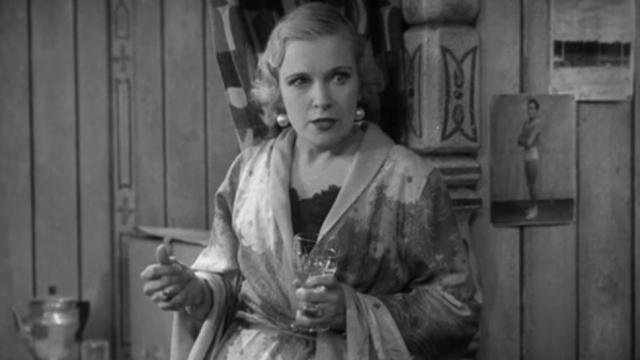We recently shared our review of Freaks, the heartfelt tale of a father trying to protect his superpowered daughter. The movie picked up a distributor soon after its premiere at the Toronto International Film Festival, which means it’ll be in theatres eventually. In the meantime, though—doesn’t that title sound kind of familiar?
The original Freaks—which has absolutely nothing to do with the new film—came out in 1932 and was a passion project for director Tod Browning, who’d made several silent films (many of which were lurid genre tales starring Lon Chaney) throughout the 1920s, and made a huge splash with Dracula in 1931. Dracula, buoyed by Bela Lugosi’s iconic lead performance, became a genre-defining Universal Horror classic. Freaks, which Browning made at MGM, has become a classic of another kind.
“Freak shows” are still referenced in popular culture—one of the very best X-Files episodes, “ season devoted to the subject. (AHS: Freak Show actually paid direct homage to the Browning movie at one point.) But the movie has something in abundance that the TV show lacked, and it’s what made audiences just as uneasy in 1932 as it does in 2018 (albeit for some varying reasons): real “freaks.”
That’s obviously a disrespectful way to describe human beings, and not something anyone should be using today, especially since most of them were simply people with disabilities. Sadly, Freaks can’t escape being exploitative; we are invited to stare at cast members like conjoined twins Daisy and Violet Hilton, “Half Boy” Johnny Eck, and “Bearded Lady” Olga Roderick. But there’s an almost documentary aspect to the film at certain points. We see only slivers of their acts under the big top; instead, the focus is on backstage moments. For instance, Prince Randian (aka “The Living Torso”) nimbly rolls a cigarette with his lips; Frances O’Connor uses her legs and feet with such graceful dexterity you barely notice she doesn’t have any arms. More problematic was the casting of “Schlitzie” (a real-life member of Ringling Bros. and Barnum & Bailey who was born with microcephaly, a neurodevelopmental disorder); though he’s just shown playing and hanging out in the background, he most likely didn’t understand the implications of being put into a movie for random strangers to gawk at, and couldn’t consent to it.
Browning, who actually ran away to join the circus when he was a teenager, had a fascination with and admiration for sideshow performers, and he deliberately cast people who were part of that world at the time. His film doesn’t mock them—it leaves that to the villains in Freaks, who treat anyone that doesn’t look like an average human with outrageous cruelty.
But, yes, there is a nominal plot that somehow manages to fit into the hourlong feature (Hollywood legend tells of a longer version that was chopped up after being deemed too shocking; whatever ended up on the cutting room floor has since been lost to time). The Freaks script was adapted from a short story by Tod Robbins, whose writing had also informed an earlier Browning film with some shared themes: 1925’s The Unholy Three, about a trio of circus people who ditch performing in favour of crime. Lon Chaney (who plays a ventriloquist, though it’s a silent film) is the big draw, but the pugnacious little person is played by Harry Earles, who’d later go on to be one of the memorable “Lollipop Guild” munchkins in The Wizard of Oz.
Before that, though, Earles and his sister Daisy played major roles in Freaks. Awkwardly they’re cast as lovers who are torn apart when Harry’s character, Hans, falls for a glamorous trapeze artist named Cleopatra (Olga Baclanova). She encourages him at first because she thinks it’s hilarious—but her intentions turn from mean to diabolical, with an assist from the circus’ brutish strong man, when she realises Hans is rich. Cleo’s plot to kill him and steal his money kicks into gear at their wedding reception, probably Freaks’ most famous scene, as the guests generously welcome Cleo into their chosen family (“We accept her, we accept her! One of us, one of us!”)
But Cleo’s disgusted response to the group—who pass around a cup that they all drink from, before proudly handing it to her as a sign of friendship—reveals her true intentions. Once Hans starts showing signs of being poisoned, the circus people close their circle and take revenge. The climax, set amid racing wagons on a stormy night, is as grim and suspenseful as anything in Dracula, and Cleo’s punishment for violating the sideshow “code”—she’s permanently transformed into a chicken-woman, then put on display and billed as “the most astounding living monstrosity of all time”—seems more than justified. The movie ends as Hans reunites with his original girlfriend (again, played by his sister), but the soft-focus happy ending is barely memorable compared to what has come before.
All of the factors that came together to make Freaks possible could never, ever be duplicated. Browning’s film has good intentions—there are scenes designed to highlight what a supportive community its characters (who are basically playing themselves) have created, hidden away from a world that doesn’t understand their existence—but in the 21st century it’s one entry in a countless pile of outdated creative works. There’s certainly no other movie like it, which is probably for the best.

